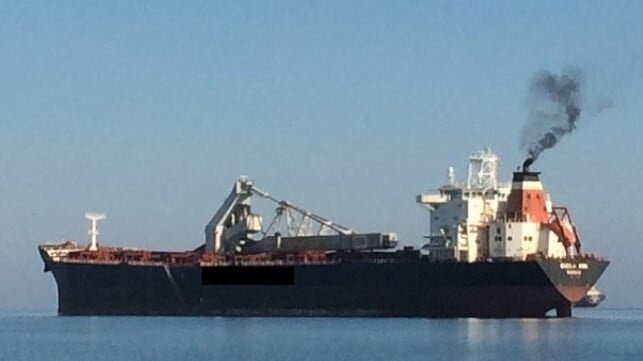Chile and U.S. Outline Plans Accelerating Adoption of Green Corridors

Planning for the launch of green corridors for the shipping industry continues to accelerate with Chile and the United States becoming the latest among the nations that signed the declaration at the COP26 conference last fall to announce initiatives. The goal is to provide the framework and incentives to support decarbonization efforts in shipping and provide a model for broader adoption across the industry.
Chile becomes the first country in South America to announce an initiative to develop green corridors and establish itself as a first-mover in the efforts. They will be working with the Mærsk Mc-Kinney Møller Center for Zero Carbon Shipping to establish a network of green corridors allowing for green maritime transportation of goods in and out of Chile. The project will include direct support from the Ministry of Transport and Telecommunications, and the Ministry of Foreign Affairs. The Center previously announced a similar initiative with Baltic and Northern European ports for a Scandinavian green corridor and late in 2021, the ports of Los Angeles and Shanghai announced plans for the first green corridor.
In November 2021, 19 countries signed a declaration to establish green shipping corridors or zero-emission maritime routes between two or more ports to help the shipping industry decarbonize as part of the UN Conference on the Climate in Scotland, Recently, Singapore announced that it would join the program planning its green corridors.
“It is essential to the transition that governments actively take responsibility and participate in establishing green corridors. The climate does not have the time to wait for global regulation to be in place before we start acting,” said Bo Cerup-Simonsen, CEO of Mærsk Mc-Kinney Møller Center for Zero Carbon Shipping announcing the agreement with Chile. “We need large-scale projects like green corridors to take the decarbonization of the maritime industry from theory to actual demonstration of production, supply, and use of alternative fuels in the ports.”
The project, called Chilean Green Corridors Network, calls for the Maersk Center to lead the pre-feasibility study in close collaboration with representatives from the Chilean Government. The first project step will comprise the mapping and assessment of the most promising green corridors in the region, based on emission intensity, fuel availability, distance to ports, vessel segments, routes, and cargo types, among other relevant aspects. This work will be completed in 2022, and it will pave the way for the deployment of selected green corridors in the coming years.
The Chilian government represents said that green maritime transportation is central to their strategy to achieve an ambitious roadmap for decarbonizing not only Chile but the entire region as well as developing a new green economy of the region.
“The decarbonization of maritime transport via the early implementation of green corridors is poised to become a leading example in international collaboration,” said Claudio Huepe, Minister of Energy for Chile. “These initiatives are key to demonstrate the viability development of new productive activities, such as green steel and green copper, to supply the world with clean materials for a sustainable economy in the upcoming decades.”
Chile’s plan was announced during the Our Ocean Conference hosted by the governments of the Republic of Palau and the United States. At the same time, the U.S. issued an extensive framework charting a course to advance domestic and international green shipping corridors.
“The United States envisions green shipping corridors as maritime routes that showcase low- and zero-emission lifecycle fuels and technologies with the ambition to achieve zero greenhouse gas emissions across all aspects of the corridor in support of sector-wide decarbonization no later than 2050. Green shipping corridors can spur early and rapid adoption of fuels and technologies that, on a lifecycle basis, deliver low- and zero-emissions across the maritime sector, placing the sector on a pathway to full decarbonization.,” the framework says.
The U.S. framework calls for governments to act encouraging relevant stakeholders across the value chain to convene and outline anticipated timelines, targets, and achievements for green corridors. Ports, carriers, and other actors in the value chain are also encouraged to demonstrate progress, commitment, and accountability.
Building on the planning process, the U.S. outlined elements including the development of alternative refueling or recharging infrastructure at ports and terminals including electrification and cold ironing along with the supply of zero-emissions fuels, bunkering, and refueling capabilities for vessels. Ocean-going vessels need to be using low- or zero-emission fuels and technologies while they also call for support vessels and commercial harbor craft to be using low- or zero-emission fuels and technologies within the green corridor.
The United States welcomes and encourages the growing movement to establish green shipping corridors and calls on countries and value-chain actors around the world to adopt ambitious actions to implement green shipping corridors and to create a clean future for maritime transportation. The goal is to see the first of the corridors launched this decade to accelerate the more to reduce emissions and bring the shipping industry on to a trajectory that is compatible with the goals of the Paris Agreement to limit carbon emissions.
